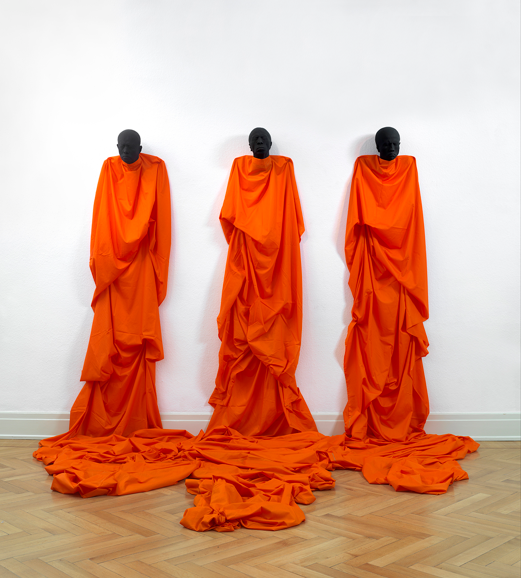
The German avant-garde
by/di Pamela Goldman (traduzione in italiano al fondo pagina)
What is your view of mankind’s existence and how do you convey this in your work?
Wolfgang Stiller: «Wow!, that is a very big one. Well I will try anyway to answer it. I just turned 61. Looking back to the time when I started to be more aware of my surroundings which would be the Seventies. Since then I feel people became much more materialistic and much more selfish. We exploit everything regardless the costs for the environment we live in nor caring for future generations. Our entire education aims at being a productive member of the society. Art used to be an exception. Something which didn’t have to make sense. Unfortunately art was sacrificed for this philosophy of greed as well. Art has become a new currency for the super rich and artists are giving in into this. They produce just for the market and collectors. Last year i started a heart project which doesn’t have any involvement of money. I am doing bronze busts of contemporary Buddhist masters so people in 50 years and more can experience the way they looked in a different way from seeing a photo. Those busts are the result of life castings of those masters. This is my way of balancing the necessity of making money and following my passion in doing art which is free from it».
What are the biggest influences in your creative choices?
W. S.: «I am never influenced directly by certain events or daily political business. Those things change and become irrelevant for the next generation or even next month. In my opinion art should focus on timeless subjects which will be always relevant. My creative choices are either dictated from the subjects I am interested in or materials I find interesting. For the last 5 years I am very fascinated by Buddhist philosophy therefore my main influence come from studying those texts and practicing Buddhism. In between I sometimes find something which gives me an idea for a new work».
Are there any artists or art movements you are drawn to and why?
W. S.: «Sure there are plenty of artists and movements I admire and the reasons are too many to name them. I can give some examples. Joseph Beuys – to me he was the most influential artist of the second half of the 20th century not only because of his radical way of thinking but also the enormous amount of materials he introduced into the art and his way of doing installations. He was a real poet in many ways. His drawings are absolutely beautiful and poetic. Then there is the arte povera movement from Italy in the 60’s which I totally admire. Their way of using those ‘poor’ materials for their sculptures and installations are very appealing to me. There are hardly any artists below 60 – 70 years old which i can relate to».
Do you find a sense of freedom of expression during these times? What is your feeling about the current vibe in your home country? Can you comment?
W. S.: «Quite the opposite right now in my opinion. There is no culture of debate at the moment. There is a certain ‘political correct’ dictate and everyone who has a slightly different opinion gets bashed. I can hardly read the newspapers anymore. Most things i read are just opinions which follow a certain mainstream which is en vogue right now. One has to be careful with everything one says especially if the person is of public interest. The west is so proud of his so called freedom of expression but when I see the reaction to some opinions which differ from what is considered political correct I can see no difference to countries who are more strict about it. I find it suffocating and absolutely the opposite of freedom of expression. These are weird times and i don’t envy the younger generation».
What do you want the viewers of your work to come away with? Is there anything you want them to embrace that is embodied in your artistic expression?
W. S.: «I would say the most desirable outcome is that the work initiates a dialogue or makes the audience ask themselves questions they hadn’t done before. I remember very well a lawyer at one of my openings who said that my works would make him ask questions regarding his own existence which he rather not ask. Too bad for him I thought. When I say dialogue I mean that there is the intention of the artist who created that work and the viewer who has his own experiences. The viewer might not entirely get the meaning of the work but he or she can enrich it with their own experiences and make it even bigger. Personally I think it doesn’t really matter when people don’t get my point why I did the work. It was just the initiation for the work to come into existence. So I always count on the audience to be open and curious so they can get something out of it».
What materials do you like to work with and can you describe your process?
W. S.: «I like materials in general and have no strong preference for a specific one. When I am starting a new work it can start either with an idea I want to realize or I find a material which gives me an idea for an artwork. If it starts with an idea for an artwork I am looking for the a material which can express it best. If the material is the starting point the material is dictating the outcome in a way. Latex vs. bronze. There is no difference for me in terms of significance, but a collector who buys a bronze will definitely enjoy the work much longer. Latex is a very sensitive material but it has qualities no other material has and therefore it offers very specific possibilities to create works one can’t do with a casted bronze for instance. I always enjoy trying to use materials in different ways, discovering new ways of how to use and display it. Most often we associate very concrete ideas with certain materials and I enjoy contradicting them. If a piece is fulfilling is not a matter of the materials».
This exhibit was compiled by Pamela Goldman, Curator and Founder of Museum Mile Contemporary, a non-profit institution.
To send a message to the artist or the administration click the link:
https://www.museummilecontemporary.org/
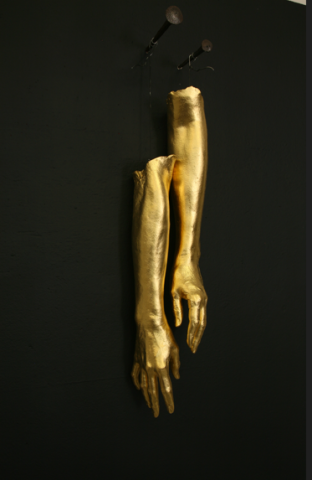
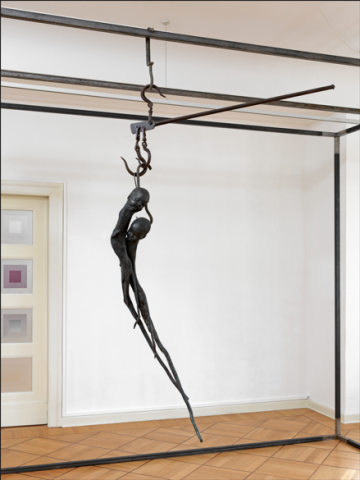
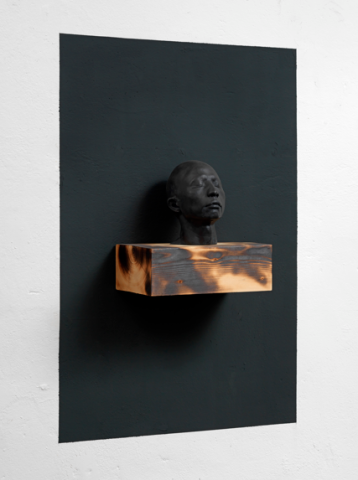
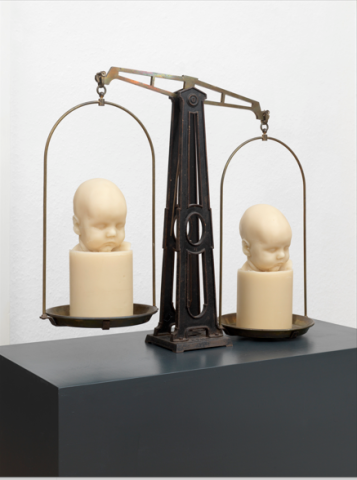
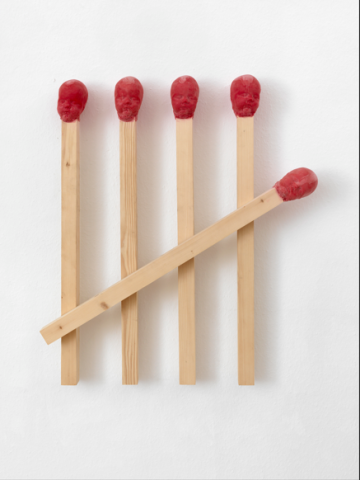
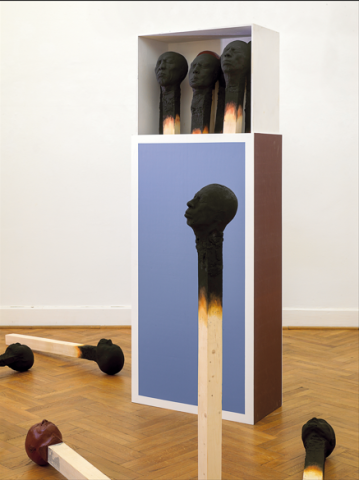
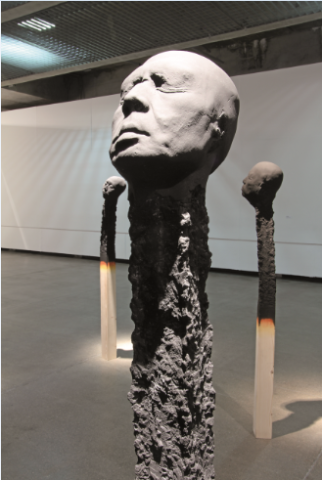
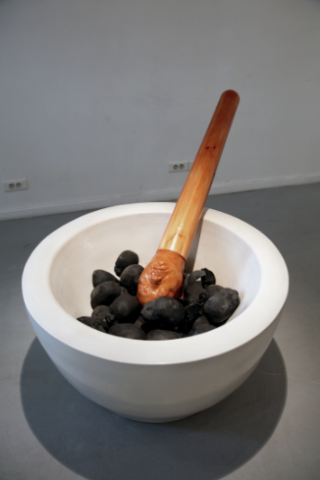
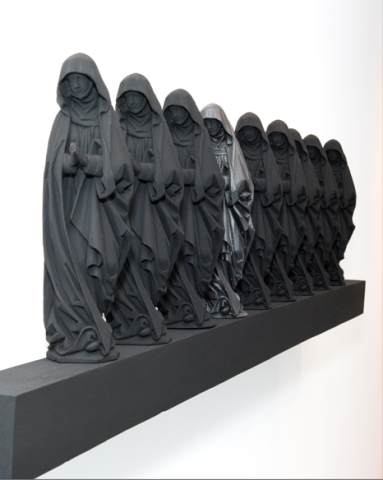
Traduzione in italiano
di Simona Maria Frigerio
Qual è la sua visione dell’esistenza umana e come trasmette la stessa nel suo lavoro?
Wolfgang Stiller: «Caspita, questa è davvero una domanda capitale! Tenterò comunque di rispondere. Ho appena compiuto 61 anni. Guardando indietro, ai miei inizi, quando cominciavo a essere consapevole di ciò che mi circondava erano gli anni Settanta. Da allora sento che le persone sono diventate più materialiste ed egoiste. Sfruttiamo qualsiasi cosa indipendentemente dai costi ambientali e non ci curiamo delle generazioni future. Il nostro sistema educativo mira a farci diventare membri produttivi della società. L’arte era un’eccezione. Qualcosa che non doveva per forza avere senso. Sfortunatamente è stata sacrificata sull’altare dell’avidità. L’arte è diventata una nuova moneta di scambio per i super ricchi e gli artisti stanno cedendo a questo diktat. Producono solo per il mercato e i collezionisti. L’anno scorso ho iniziato un progetto che mi sta a cuore e che non implica il coinvolgimento di denaro. Sto facendo dei busti di bronzo di maestri buddhisti contemporanei cosicché le persone, tra cinquanta o più anni, possano sperimentare la loro immagine in modo diverso da come potrebbero fare guardando una foto. Sono realizzati con stampi dal vivo. Questo è il mio modo di bilanciare la necessità di guadagnare con il desiderio di fare arte libera dal discorso economico».
Quali sono state le maggiori influenze sulle sue scelte creative?
W. S.: «Non sono mai direttamente influenzato dagli eventi o dagli affari politici. Sono cose che cambiano e diventano irrilevanti per la generazione successiva o persino a distanza di breve tempo. Secondo me l’arte dovrebbe focalizzarsi su soggetti senza tempo, che saranno sempre importanti. Le mie scelte creative sono dettate o dalle tematiche che mi interessano o dai materiali che scelgo. Negli ultimi cinque anni sono stato affascinato dalla filosofia buddhista e, di conseguenza, la principale influenza è stata lo studio dei testi e la pratica buddhista. Di tanto in tanto trovo qualcos’altro che mi suggerisce un’idea per un nuovo lavoro».
Ci sono artisti o movimenti artistici che la attraggono e perché?
W. S.: «Sicuramente ce ne sono parecchi e le ragioni sono troppe per poterle elencare. Posso però fare qualche esempio. Joseph Beuys – che, per me, è stato l’artista più influente della seconda metà del XX secolo, non solamente per il suo radicale modo di pensare ma anche per l’enorme quantità di materiali che ha introdotto nell’arte e il modo in cui lavorava alle sue installazioni. È stato un autentico poeta. I suoi disegni sono straordinariamente belli e poetici. Poi c’è il movimento dell’arte povera di origine italiana, nato negli anni 60, e che ammiro profondamente. Il modo in cui usavano quei materiali ‘poveri’ per le sculture e le installazioni mi affascina. Non credo esistano artisti con meno di 60/70 anni con i quali riesco a relazionarmi».
Trova che vi sia libertà di espressione in questo periodo? Percepisce ‘good vibe’ nel suo Paese?
W. S.: «Esattamente l’opposto. Al momento è scomparsa la cultura del dibattito. C’è un dettato di ‘political correctness’ e chiunque abbia un’opinione minimamente diversa subisce attacchi. Non riesco più a leggere i quotidiani. La maggior parte delle cose che leggo sono opinioni che seguono il mainstream, che è al momento di moda. Bisogna stare attenti a qualsiasi affermazione si faccia soprattutto se la persona è di rilevanza pubblica. L’Occidente è così orgoglioso della sua cosiddetta libertà di espressione ma quando vedo le reazioni ad alcune opinioni diverse da quanto è considerato politicamente corretto, non percepisco alcuna differenza con Paesi più rigidi. Trovo tutto ciò soffocante e assolutamente il contrario della libertà di espressione. Sono tempi inquietanti e non invidio le generazioni più giovani».
Cosa vorrebbe lasciare a chi guarda le sue opere? Cosa desidera che colga, il pubblico, della sua espressione artistica?
W. S.: «Direi che il risultato auspicabile sarebbe che il mio lavoro aprisse un dialogo o facesse in modo che il pubblico si ponga delle domande che non si è mai fatto. Ricordo bene un avvocato, a una delle mie vernici, che mi disse che quei lavori gli ponevano questioni riguardo la sua propria esistenza che non avrebbe voluto porsi. Ho pensato che fosse troppo negativo per lui. Quando parlo di dialogo, intendo quello tra l’artista che crea l’opera e lo spettatore con le sue esperienze. Quest’ultimo può anche non afferrare il significato del lavoro ma lui o lei può arricchirlo di tali esperienze e renderlo più ‘ricco’. Personalmente, penso che non conti se le persone colgono o meno ciò che voglio dire o le ragioni di una certa opera. Tutto questo è solo la scintilla perché un lavoro veda la luce. Confido che l’audience sia composta di persone aperte e curiose così da ricavare qualcosa dall’incontro con le mie opere».
Con quali materiali ama lavorare? Può descriverci il procedimento?
W. S.: «Mi piacciono in generale i materiali e non ho preferenze per nessuno in specifico. Quando inizio una nuova opera ciò avviene o partendo da un’idea che voglio realizzare o da un materiale che mi suggerisce l’idea per un lavoro artistico. Se parto dall’idea, mi metto alla ricerca del materiale con il quale esprimerla al meglio. Se è il materiale il punto di partenza è lo stesso a dettarne l’esito in un certo senso. Latex contro bronzo. Non c’è differenza per me in termini di importanza, ma un collezionista che acquista un bronzo potrà godersi l’opera per un tempo più lungo. Il latex è un materiale molto delicato ma possiede qualità che nessun altro vanta e, di conseguenza, offre opportunità specifiche per creare lavori che non si possono fare in bronzo. Mi diverte tentare di usare i materiali in modi diversi, scoprendo nuove maniere per utilizzarli e visualizzarli. Spesso associamo idee concrete ad alcuni materiali e a me piace contraddire tale convinzione. Se un pezzo ci soddisfa non è questione di materiali».
Mostra virtuale a cura di Pamela Goldman, Curatore e Fondatore del Museum Mile Contemporary, istituzione no-profit.
Per inviare un messaggio all’artista o all’amministratore del sito, cliccare:
https://www.museummilecontemporary.org/
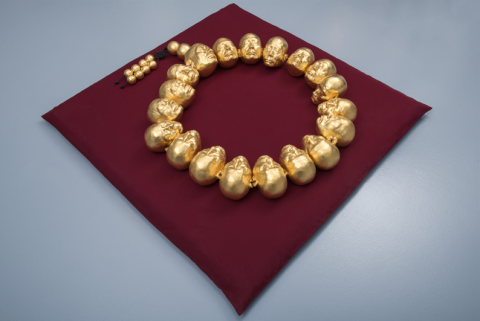
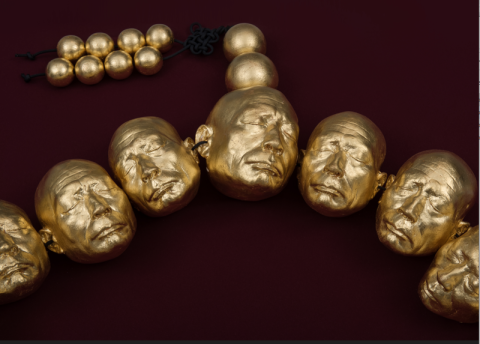
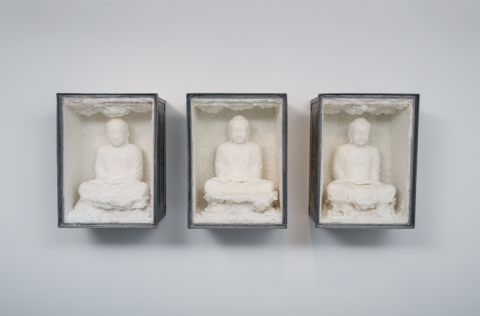
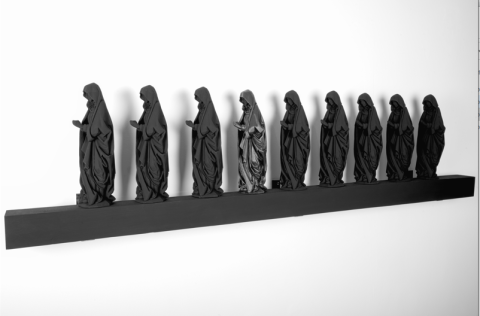
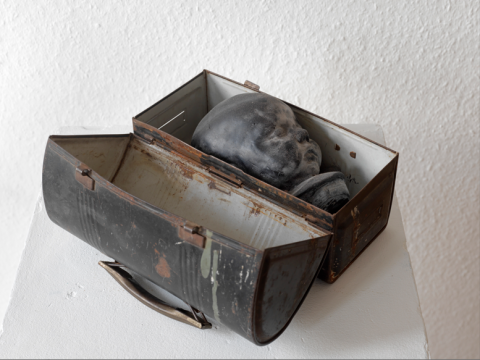
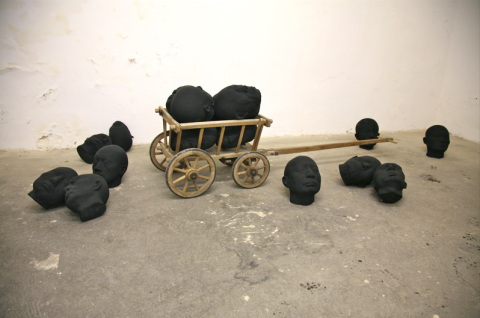
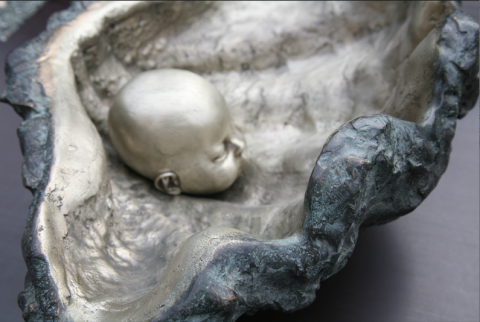
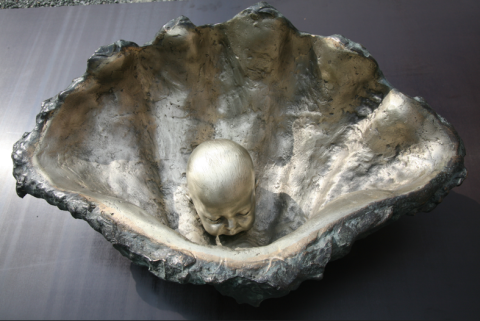
Friday, August 5, 2022 / venerdì, 5 agosto 2022
On the cover and in the article: all images courtesy by the artist ©Wolfgang Stiller (all rights reserved. Reproduction prohibited). Photo credits: Achim Kukulies and Juitar Photography / In copertina e nell’articolo: tutte le immagini courtesy l’artista, ©Wolfgang Stiller (tutti i diritti riservati. Vietata la riproduzione). Crediti fotografici: Achim Kukulies and Juitar Photography.







